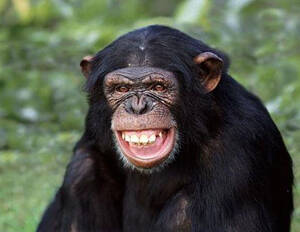
Piliocolobus tephrosceles
Piliocolobus tephrosceles,Uganda Red Colobus,Red colobus monkey Ugandan subspecies
The scientific name of the Ugandan red colobus is Piliocolobus tephrosceles,···

Piliocolobus rufomitratus
Piliocolobus rufomitratus,Eastern Red Colobus,Eastern red colobus, Tana colobus
Tana River Red Colobus (scientific name: Piliocolobus rufomitratus) is calle···

Piliocolobus preussi
Piliocolobus preussi,Preuss’s Red Colobus,Preuss's red colobus
Preuss’s Red Colobus (scientific name: Piliocolobus preussi) is also known ···

Procolobus pennantii
Procolobus pennantii,Bioko Red Colobus,Oko Red Colobus
Pennant's Red Colobus (scientific name: Procolobus pennantii) is also kn···

Pan troglodytes
Pan troglodytes,Chimpanzee,gorilla
Chimpanzees (scientific name: Pan troglodytes) are called Chimpanzees in for···

Piliocolobus oustaleti
Piliocolobus oustaleti,Oustalet’s Red Colobus
Oustalet’s Red Colobus (scientific name: Piliocolobus oustaleti), also know···

Piliocolobus kirkii
Piliocolobus kirkii,Zanzibar Red Colobus
Zanzibar Red Colobus (scientific name: Piliocolobus kirkii) is called Zanzib···

Piliocolobus gordonorum
Piliocolobus gordonorum,Udzungwa Red Colobus
Udzungwa Red Colobus (scientific name: Piliocolobus gordonorum) is called Ud···

Piliocolobus epieni
Piliocolobus epieni,Niger Delta Red Colobus
The Niger Delta Red Colobus (scientific name: Piliocolobus epieni) was first···

Piliocolobus bouvieri
Piliocolobus bouvieri,Bouvier’s Red Colobus
Bouvier’s Red Colobus (scientific name: Piliocolobus bouvieri), also known ···

Piliocolobus badius
Piliocolobus badius,Western Red Colobus、Red Colobus,Western red colobus, West African red colobus, Bay colobus, Western red colobus, Red colobus
West African Red Colobus (scientific name: Piliocolobus badius) is also know···

Colobus vellerosus
Colobus vellerosus,White-thighed Colobus、Geoffroy's Black-and-white Colobus,Jervis's black-and-white colobus
Colobus vellerosus (scientific name: White-thighed Colobus, Geoffroy's B···

Colobus satanas
Colobus satanas,Black Colobus
Black Colobus (scientific name: Colobus satanas) is called Black Colobus in ···

Colobus guereza
Colobus guereza,Guereza、Eastern Black-and-white Colobus、Magistrate Colobus,Eastern black and white colobus
The East African black-and-white colobus (scientific name: Colobus guereza) ···

Colobus angolensis
Colobus angolensis,Colobus、Angolan Black-and-white Colobus、Angolan Colobus,Angolan black and white colobus monkey
Angola Colobus (scientific name: Colobus angolensis) is also known as Colobu···

Mandrillus leucophaeus
Mandrillus leucophaeus,Drill,Black-faced mandrill
Drill (Scientific name: Mandrillus leucophaeus), also known as Drill in Engl···

Cercocebus torquatus
Cercocebus torquatus,Red-capped Mangabey
Red-capped Mangabey (scientific name: Cercocebus torquatus), also known as R···

Cercocebus sanjei
Cercocebus sanjei,Sanje Mangabey
Sanje Mangabey (scientific name: Cercocebus sanjei), also known as Sanje Man···

Cercocebus torquatus
Cercocebus torquatus,White-collared Mangabey、Collared Mangabey、Red-capped Mangabey、Sooty Mangabey
The scientific name of the white-necked mangabey is Cercocebus torquatus, an···

Cercocebus galeritus
Cercocebus galeritus,Tana River mangabey,Tana River Mangabey
The crested white-browed monkey (scientific name: Cercocebus galeritus), als···

Cercocebus atys
Cercocebus atys,Sooty Mangabey,Sooty white mangabey, Red-crowned mangabey, Red-capped mangabey, White-crowned mangabey
White-naped mangabey (scientific name: Cercocebus atys), also known as Sooty···
